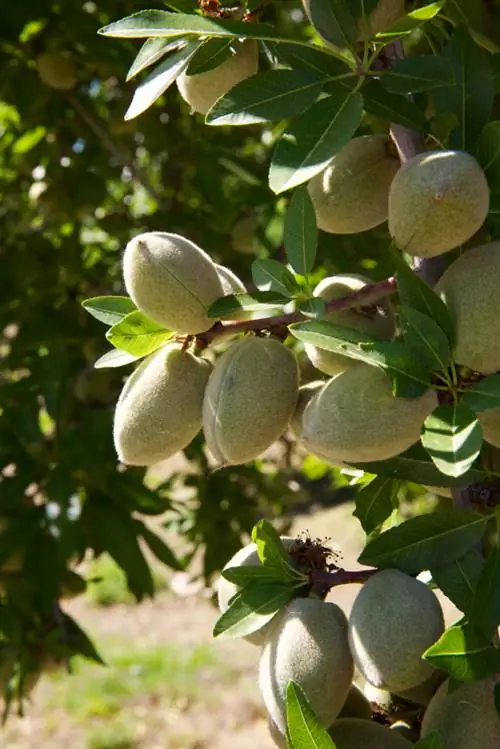- Author admin [email protected].
- Public 2023-12-16 16:46.
- Last modified 2025-01-23 11:20.
Headlines are always unsettling when it comes to enjoying the valuable almond fruit. In fact, almonds are only considered poisonous in individual cases and under certain conditions. The sweet almond sets the best example.

Are almonds poisonous to eat?
Are almonds poisonous? As a rule, sweet almonds are harmless and he althy, while untreated bitter almonds can be toxic due to their hydrogen cyanide content. However, adults would need to eat 50-60 bitter almonds to risk poisoning, while 5-10 bitter almonds can be fatal for children. Heating reduces the hydrogen cyanide content.
Recommendations for everyday enjoyment
Around 20 grams of sweet almonds are recommended for adults to consume daily. Raw or processed in dishes, they are important suppliers of nutrients and vitamins.
For pregnant women, this variety offers a potential source of the vital folic acid in even larger quantities.
Almond cultivation is flourishing in a wonderful economic spotlight, primarily in America and southern Europe. Every generation enjoys the sweet, nutty taste.
Attention: bitter almond
Questions often arise when eating these delicacies. In fact, it is only found in bitter almonds. In addition, it is important to know that they are only toxic in their untreated form. The culprit is the feared hydrogen cyanide.
Poisoning from eating raw bitter almonds is rarely recorded in adults. This would require the consumption of 50 to 60 almonds of this type.
However, in contrast, 5 to 10 bitter almonds cause fatal poisoning in children. The amount depends on body weight.
A few facts shed light on the feared world of almonds:
- Prussic acid is very volatile and extremely sensitive to heat.
- Prepared in cooked dishes, bitter almonds have a tiny amount of hydrogen cyanide.
- Bitter almonds become edible when heated sufficiently.
Tips & Tricks
In your home allotment it is advisable to only grow sweet almonds to protect people and animals. A colorful selection offers excellent springtime feast for the eyes.






